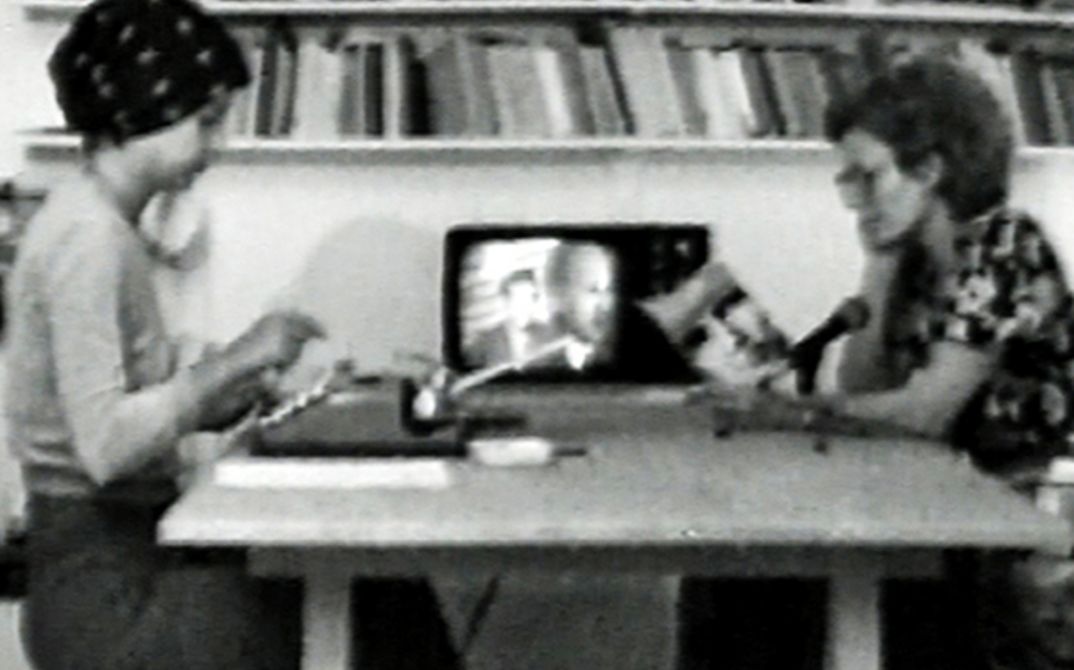28 min. French.
S.C.U.M. Manifesto stages a reading of Valerie Solanas’s eponymous manifesto from 1967. As news images of male-dominated world events flicker across the television screen, Delphine Seyrig disseminates Valerie Solanas’s theses on men – who, according to the manifesto, are both biologically incomplete and driven by vagina envy.
Carole Roussopoulos was born in Lausanne, Switzerland in 1945; she died in 2009. She studied in Lausanne and moved to Paris in 1967, where she founded the militant video collective “Video Out” with her future husband. In 1970, on the advice of her friend Jean Genet, she bought a portable video camera and shot her first film, Genet parle d’Angela Davis. In 1982, together with Delphine Seyrig and Ioana Wieder, she founded the Centre audiovisuel Simone de Beauvoir, the first archive for audiovisual works with a feminist emphasis. Her extensive filmography comprises more than one hundred works.
Delphine Seyrig was born in Beirut, Lebanon in 1932 and spent her childhood by turns in the Middle East and the United States. In 1952, she began an acting career in France. In 1956, she trained at the Actors Studio in New York. For her first film role, she acted in Robert Frank’s Pull My Daisy (USA, 1959); in the 1960s and 1970s, she acted in films by Alain Resnais, François Truffaut, Luis Buñuel, Jacques Demy, and Chantal Akerman. At the same time, Seyrig joined the women’s movement that formed in the aftermath of May ’68. In the early 1970s, in the milieu of Carole Roussopoulos, she discovered the possibilities of working with video; among other things, in 1976, she and Roussopoulos shot the feminist film S.C.U.M. Manifesto. Together with Ioana Wieder and Carole Roussopoulos, in 1982 she founded the Centre audiovisuel Simone de Beauvoir, and served as its president until her death in 1990.
